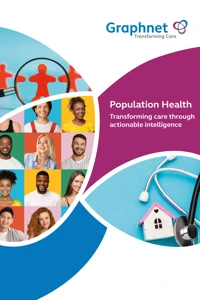Using segmentation to optimise patient outcomes with Graphnet & Johns Hopkins ACG® System
Read More

Solutions

At Graphnet, we empower healthcare organisations with cutting-edge population health solutions designed to enhance patient segmentation and risk stratification.
By centralising vast amounts of health and social care data, we enable a data-driven approach to identifying at-risk populations, predicting future healthcare needs and optimising resources.
Whether you’re looking to enhance preventative care strategies, streamline disease management, or drive better outcomes across integrated care systems, Graphnet delivers the solution you need.
With access to a rich pool of data and advanced population health analytics tools, segmentation can be performed based on:
· Demographics: Age, gender, and other key characteristics.
· Clinical Factors: Specific diseases and morbidity rates.
· Healthcare Utilisation: Patterns of service usage and patient interactions.
Beyond stratification, our solutions support early intervention and prevention. Risk stratification engines detect patients at risk, or those on negative health trajectories, while automated ‘what-if’ models provide clinicians with data-driven, proactive care strategies.
Our cohort mapping engine supports the creation of standardised disease and wellness registries, with the option to include custom mappings for localised healthcare needs.
In addition to this, Frailty Management Solutions like the Electronic Frailty Index (eFI) enable full-population stratification of elderly patients, providing a comprehensive frailty score based on health data.
Our data and model APIs, built on REST API architecture, offer seamless integration with third-party business intelligence and data science tools.
Graphnet also collaborates with Johns Hopkins HealthCare Solutions, integrating the John Hopkins ACG System, a leading risk stratification model.
This supports clinicians in identifying the right patients for targeted interventions while enabling ICSs to better allocate resources and reduce healthcare inequalities.
Immunisation Management System (IMS)
© 2025 Graphnet Health Limited . All rights reserved.

